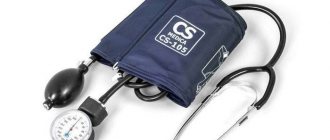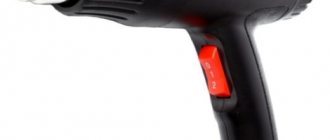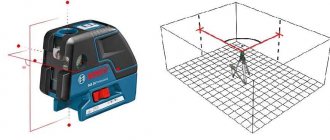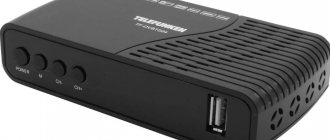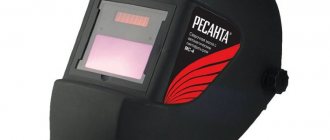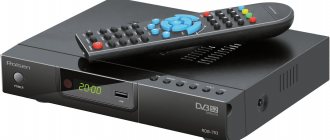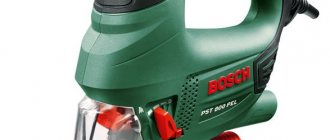general information
If you have long been interested in the question of which stapler is better to choose, then it will not hurt you to first find out how this tool for fastening papers works.
Principle of operation
Its design includes a metal groove for inserting staples. To move them forward, a special spring or plate is provided. The latter option is considered more practical, since the spring begins to stretch over time and at one point may come off the hooks on which it is attached.
Thanks to the plate, the staple-moving tongue will operate smoothly. Its main task is to ensure that the clip of staples is constantly located at the edge. The push rod is usually made of metal or plastic. And it’s best if this is the first option, which is characterized by increased reliability.
Loading the stapler
Before work, the staples must be placed in the internal mechanism, after which, when you sharply press the device, staples will shoot out of it and fasten the sheets. When all the clips are used up, you just need to insert a new one to continue working.
Typically, full-load stapler models require one new plate of clamped staples to be inserted. However, there are models in which half the clip is enough to replace the spent staples. to understand how pocket and office staplers work and how many staples they require. You can easily figure out how to change the plates, for which you don’t even need to look for a diagram of the stationery stapler. You just need to lift the top cover and insert a new clip into the groove.
Office supply stores also offer front-loading staplers. These models have a special button on the body, when pressed, the spring of the mechanism is released and the chute moves forward.
Owners of professional devices may experience certain difficulties in replacing staples. Among them there are models that allow you to load 7 types of staples. But they have one feature - they allow users to choose the bonding depth at their discretion.
Varieties
Today, manufacturers produce many types of paper fastening devices. Among the rare options, pocket staplers should be highlighted. This product differs from all others in its compact size, which allows you to place this stapler in the palm of your hand. Most often, their body is made of plastic. Using such a tool, you can stitch a small number of sheets of paper at the same time.
Such products are popular among consumers due to their low cost. However, before you decide to purchase one, you should know that they are not suitable for intensive work . If you use it too often, it will soon break down and you will have to look for a replacement.
Office employees most often purchase desktop staplers. But you should know that you should not connect sheets of paper by weight with them. They must be located on a hard, level surface. If you carefully examine their body, you will see a special anti-slip coating in the lower part, which prevents them from moving around the table even during load.
The large stationery stapler stands out among its fellows due to its large dimensions. Its design uses a special lever that serves as the main working element. By pressing on it, you can fasten the required number of sheets of paper . The most powerful models can simultaneously connect no more than 260 sheets. Manufacturers often add special devices to them for removing bent staples. There are also models with a special fixing bar, which allows the user to independently select the fastening depth.
A real clerk
Recent Entries
Categories
Hashtags
We are surrounded by staples, they are used to fasten a cash receipt and a sales receipt written by hand, a stack of bills for an apartment, a candidate’s resume of a couple of sheets. Staples all around.
It really infuriates me when you try to punch three pieces of paper and the staples get stuck inside the stapler or bend on the paper.
Let's figure out why this happens.
- The stapler is faulty. For example, the output hole of the staple head is deformed, then the staples get stuck inside.
- The stapler contains the wrong size staples. The secret is in the same staple head - it is calibrated for a specific size. If there are smaller staples, they will fly through several pieces and get wrinkled inside. If more, they will get stuck at the exit. Although, there is always another option. If you are very strong, the staples will not get stuck, but the exit hole will break.
- You are trying to punch through more sheets than the stapler and staples are designed to handle.
- You bought cheap staples. A low price does not appear out of the blue. This means that the manufacturer saved at some stage of production.
In this article I won’t focus on staplers (we’ll get to them later), but on staples. Let's take a closer look at where and what we were missing, how to get honestly working staples and what to look for when purchasing.
In the photo: above, this is what the packaging and contents look like when the manufacturer saves on everything. In the lower part, brackets with different coatings: painted, uncoated, copper-plated and galvanized.
Making staples is a simple cutting and bending process. In a good way, they are made from uncut metal wire. This means that it is the same diameter along its entire length and all staples in the block will be even. However, the price will drop significantly if the wire is made of aluminum rather than iron. Aluminum is cheaper, but it is also softer, which means it bends and breaks more easily. Good staples are made of steel, and excellent ones are made of stainless steel. Good to know: all staples with a leg height greater than 10mm are made of steel.
To protect the staples from environmental influences and for beauty, they are coated with something. Here is a list of commonly used coatings:
- Painting is simply paint and serves purely decorative purposes.
- Galvanizing is the cheapest coating method and protects against rust. Over time, the staples become a greenish-red color.
- Copper plating is a protective and decorative coating, which is why the staples are pink or red in color. Protects against rust.
- Nickel plating is a cool plating method that makes the brackets look chrome-plated and will not rust for a long time.
It is logical that the type of coating does not affect the price. But we don’t save on nerves, right?
The staples should not fall apart when you take them out of the box. Moreover, the block must withstand a fall from a height of one and a half meters and not fall apart. To do this, the staples are glued. The amount of glue should be such that the staples do not spread throughout the box, otherwise there will be a mess inside. If the glue is applied unevenly, they will get stuck and bend inside the stapler. The same thing applies if there is a lot of glue, but I have never met such a generous manufacturer.
Read also: Types of gas torches for soldering
When purchasing, pay attention to whether there is an inscription on the box that the staples are sharpened or sharpened. The legs of the staples are sharpened from the outside or inside. This tiny adjustment makes it easier to pierce the paper and reduces the chance of the staples bending. Of course, unless you decide to get into the Guinness Book of Records and punch one hundred sheets with staples No. 10.
Selection of bracket size:
Usually, staples are purchased along with a new stapler. Or to one that has just been stolen from someone else’s table, repainted and with the numbers changed. Therefore, we look at what number of staples the stapler is designed for, and based on this, we buy staples. It happens that nothing is indicated on the stapler, that’s how the Chinese are. Then we turn on the logic mode, if the stapler is small, then 90% there are 10 staples, if the stapler is medium or large, then staples 24/6, or take it with you to the store. I did this when I needed to buy a faucet for a mixer. I turned off the water in the apartment, unscrewed the faucet and went to the market to pick it up. Profit!
One day, I will write about staplers in detail, but I will give some information right now. Before purchasing, decide what you need the stapler for. For use at home or everyday work in the office, with a small number of sheets, “number 10” is ideal. It punches up to 12-16 sheets (we are considering all the available options for purchase, sold on every corner), is small in size and does not take up space. Just what you need! For regular work with documents and a decent amount of paper, for example in the accounting department or secretariat, a more powerful companion is suitable - the number 24 stapler. Typically, such staplers punch up to 30 sheets, this is indicated on the packaging (we do not consider special perverted cases). Yes, 24/6 staplers are larger sizes. Yes, they take up more space. But they are also more reliable, designed for intensive work and active use in a 24 to 7 format. Such staplers use staples number 24/6 and 26/6, if indicated on the package.
Damn it, they kept it a secret behind seven seals. I scoured the Internet, looked through the available catalogs of manufacturers that I could reach, but there was very little information. But why?
Here are some versions:
- "Classical" sounds like this. The first number is the bracket type. To keep things simple, we called it a conventional unit. Supposedly, it includes the width of the staple, the cross-sectional size and the steel grade of the wire. This is the most popular version, found on almost all office resources.
Versions for the curious, clerks and deep immersion in the topic:
- OK. There is another version. I'll call it "mixed". Information of this kind is less common, but still. According to this version, the first digit of the fraction is tied to the American wire thickness marking system (American Wire Gauge (AWG)). In it, the lower the value, the thicker the wire. Smart guy mode activated: wire is made by drawing. It is pulled through the decreasing holes of the die to the desired diameter. The number indicates the number of pulls. AWG gauges indicate not only the dimensions (diameter, cross-section) of the wires, but also the sizes of rods, rods, tubes, and the same wire for staples.
- And here is the version from the manufacturer KW-Trio (Taiwan) (information from the official website). In staples with fractions, such as 24/6, the value in the numerator (24) determines the number of staples per inch. The lower the number of staples per inch, the thicker the wire from which the staple is made. Actually, that’s right, I went to the warehouse and looked. Here is a photo.
Staples of different numbers, different manufacturers as an example
Glory to the hares, the second digit in the fraction does not raise any questions - the length of the leg is in mm. When choosing a staple for fastening, know in advance the thickness of the booklet you are going to punch. To do this, you need to press it down a little + take a margin of 3-4 mm for bending the bracket.
Voice from the audience: - What about staples No. 10? Answer: - No way. According to the dictionary. Just remember - these are the smallest office staples. It's not true, No. 21 exists, but it's a mythical beast like Pikachu. In reality, no one saw him. And if he did, he was on drugs. Why they are called that, why the hell they don’t have a fractional number, I don’t know, there is no information. I think the manufacturers don’t know either, they’re just acting out of old memory.
For reference:
And here is a table of correspondence between the markings of staples and the number of sheets being fastened.
Correspondence of staple numbers to the number of sheets being punched
Just two main thoughts. First, all staples are good, choose the right ones for the situation. The second is to buy cheap staples - save pennies, but lose rubles. I am not a fan of buying staples from the same manufacturer as the stapler. Check it in practice, staples don’t cost crazy money, experiment. Over time, brands you trust will emerge. When choosing staples, pay attention to the packaging. Quality of workmanship: printing pictures, gluing and design will say a lot even before purchase.
Also, the packaging must indicate:
Example of proper staple packing
I'm not saying you shouldn't buy cheap braces. I'm just warning you, don't expect a miracle. If you use a stapler once a year, then it doesn’t matter what staples are loaded into it. Yes, there is a chance that you will punch two leaves on the third try, well, never mind, there are a thousand in the box. Buy aluminum, without sharpening and coating, from an unknown manufacturer, with the expectation that 30% will be spent on defects - not a big loss. But if your productivity is a little higher, you work with documents regularly, and their appearance and neatness matters. Welcome to the club!
Stapling Types
Stationery staplers can be divided according to the method of fastening sheets. Among them, the most common option, which is often used by office workers, is closed-type stapler devices. During operation, this tool bends the edges of the staple inward. This method provides the most reliable connection of sheets. Therefore, it is not surprising that such staplers are the most popular.
There are also open type staplers. They differ from devices with a closed stitching method in that they bend the staples outward. They are indispensable when you need to temporarily stitch paper sheets. Subsequently, the fastened sheets can be easily separated, and no traces remain on them.
Some office workers sometimes purchase staplers with straight staples for work. It makes sense to use them when there is a need to fix sheets of paper on a special board with a soft surface. For example , it could be a base made of cork.
Dimensions of staples for office staplers
Each stapler has a specific staple size. It all depends on the number of sheets that need to be stitched.
The most common staples for a stapler are “10”. Most other staples that differ from the “10” standard have two numbers in the name. The first is the number, and the second is the length of the pointed leg of the staple.
Most staples for office staplers have the same length of the leg, but the size may differ. Therefore, before you buy staples for a stapler (their prices are usually low), you need to carefully read their size on the packaging of the device.
The smallest office staple has a size of “21” - a length of 7 mm, while in the traditional “10” it is 9 mm. The largest office staple is “24”, and the length of its legs can be either 6 mm or 8 mm. So you need to be very careful when buying.
Read also: How to ring a telephone board
The most common staples for staplers (8 mm leg length): “24/8”, “26/8”. With a leg length of 6 mm – “24/6”, “26/6”.
Additional options
When buying a stationery stapler, few people might think that it can be further improved. However, this is not the case , and this is confirmed by new models that manufacturers regularly release in order to improve their ease of use.
- If you want to get one of these models at your disposal, we recommend that when choosing a stapler, make sure that there is a plastic footrest or rubberized inserts at the bottom of the body. They will help protect the table surface from scratches and other mechanical damage.
- Some models can be additionally equipped with such a useful device as a destapler. Its main purpose is to straighten staples. It may be required if you decide to separate sheets of paper that were once fastened together. Of course, you can use scissors or nails for this, but this is not very convenient, and after such a “barbaric” method, the sheets will no longer look as aesthetically pleasing as before.
Device repair
If, after several months of active use, your pocket or desktop stapler breaks down, then it would be better to purchase a new one instead . But sometimes problems occur with this tool that can be fixed without resorting to drastic measures.
- First, you should disassemble the tool - to do this, remove the body and pull the clip out of the groove. This will help you make sure that there are some stuck staples at the exit point that are preventing the unit from working properly. Most often, it is because of this that staplers stop functioning normally.
- To restore the functionality of the device, you need to remove all stuck staples. To make this easier for you, we recommend using tweezers or a thin screwdriver. But be careful not to hit the groove, spring and pusher, which can be broken very easily.
- Now you can start assembling the stapler. First, install the spring in its original place, followed by the housing and press on the upper part, first aligning it with the lower one, with such force that they are connected.
How to choose a stapler?
To ensure that you are satisfied with the performance of your office stapler, the first step is to find out what you are going to use it for. Only by knowing what tasks you need this tool for can you be sure that you will make the right choice.
To prevent you from making a mistake when choosing this stationery, when studying different models you should consider the following characteristics:
- When choosing a stapler, we advise you first of all to pay attention to the spring mechanism, which, when you press it, fires a staple, directing it into the paper. The reliability of the device depends on it. In many models, this element is made in the form of a slider that presses the magazine, which is firmly fixed in the upper part of the device using a spring. Powerful models use a steel plate instead of a spring, which allows the stapler to last longer. If the spring fails, you can use plastic tape instead, although it is not durable and is used mainly in cheap versions.
- Another important element that you should pay attention to when choosing is the drive. Depending on its type of execution, there are mechanical and electric staplers. For office work, it is best to purchase a device with an electric drive, which can sew up to 20 sheets per minute of working time.
- To quickly and correctly staple sheets, you need not only to choose the right stapler, but also the staples for it. In resolving this issue, we recommend focusing on the manufacturer: buy consumables from the same company as the stapler you purchased. Working with a tool that has been loaded with staples that do not comply with the instructions can be very frustrating. In the best case, the sheets of paper will be sloppily fastened or the staples will get stuck in them, and in the worst case, the device will simply fail.
- The staples for the stapler must be the correct size. To avoid mistakes, be guided by the power of the device. More powerful models will require thicker brackets.
Staples for office stapler
Metal elements intended for stitching papers are made of soft and thin wire. It doesn't take much effort to join even 10 sheets of paper. In addition, the design of a stationery stapler involves bending the ends of the paper clips.
The most common brackets are number 10, used for pocket models that have the smallest size. Other types that differ from tens are marked with two numbers. The first indicates the type, the second indicates the height of the working part.
Thus, desktop staplers have larger staple sizes. Minimum size 21/7. For stationery elements, the maximum size is 26. Their height is 6 mm and 8 mm. Accordingly, the marking looks like this: 24/6; 24/8; 26/6; 26/8.
Read also: Motor 3 phase 220 volts
